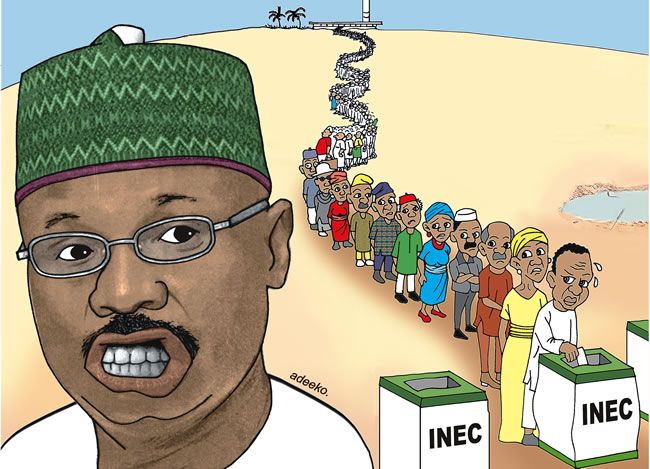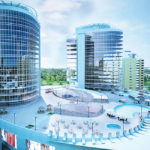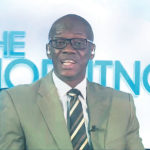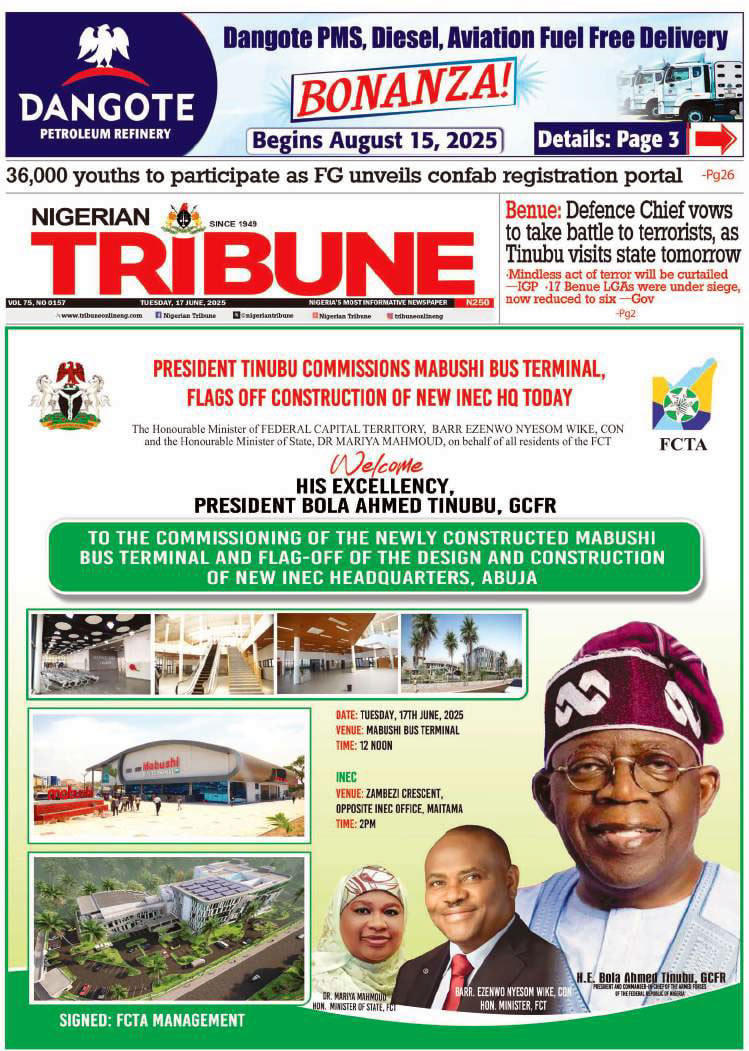Issues relating to polling units in democracy remain critical because of the role of the electorate. In this report, KUNLE ODEREMI and TAIWO AMODU write on the plan by the Independent National Electoral Commission (INEC) to create more polling units across the country vis-a-vis the credibility of elections.
Polling unit constitutes a fundamental building block for credible election. It serves as the real platform for eligible citizens to exercise their franchise since a polling unit or station is a place, where eligible persons can register to vote in an election.
There are about 120 000 polling units disproportionately spread across the 36 states and the Federal Capital Territory (FCT) Abuja. Some of the units have multiple voting points due to density of the population of registered voters, especially in urban areas.
The latest report is that 12 states in the northern axis have made requests for 3, 323 new polling units while 2, 424 requests came from the 14 states in the south as of October 2020. It is not uncommon to notice expressions of anguish by voter on an election day. The anger is usually borne out of their frustration in locating polling units, crowded polling units, long distance, and difficult terrains and sometimes due to logistic issues and late arrival of voting materials. Often, it is fraught with problems, both human and logistics.
In its bid towards enhancing the credibility of elections, INEC has, over time, upped the ante through pragmatic steps designed to end the era of manual process. It keyed into information technology infrastructure via Electronic Voting System (EVS) that encompasses the Electronic Voter Register (EVR) by capturing biometrics of citizens.
Preparations
There are ongoing consultations with stakeholders, including the partners such as the European Centre for Electoral Support (ECES), media, political parties, security, other government agencies and security on the Independent National Electoral Commission (INEC) to create additional polling units.
According to its chairman, Professor Mahmood Yakubu, Nigeria currently has 119,973 polling units with additional 57,000 voting points for its 84 million voters. He believes that based on the county’s rising population, the commission needs to seek ways to ensure voters do not have to travel long distances to vote.
He noted that despite the fact that INEC introduced voting points to complement the polling units, people who intend to vote still experience difficulty finding their units. “If you look at some of the satellite images and you place dots on spots where there are polling units in relation to the vast area where we have no polling units, we are still under-served even with the initiative of the commission in operating voting points and voting point settlements. So, GIS in our operation with the equipment that we have will be a great facilitator in the efforts of the commission in that respect.”
Similar efforts were made in the past by Yakubu’s predecessors. But the effort was frustrated by unwarranted strange behaviours of members of the political class cum elite who could not rise above narrow partisan interest and objectives. Yakubu has met with parties and reassured them of the commission’s plans to create new polling units in the country ahead of the 2023 elections. At a stakeholders’ meeting with political parties’ leaders in Abuja, Yakubu acknowledged that expanding voters’ access to polling units was crucial to voter turnout in elections.
He added that such expansion was more germane now due to the scourge of Coronavirus ravaging the world. “Increase in voter population, emergence of new settlements, urbanisation, distance to existing polling units, difficult terrain and other factors require constant review to give the voter a pleasant experience on Election Day. Above all, in the context of the COVID-19 pandemic, it is necessary to decongest polling units to minimise overcrowding and reduce the long distances voters travel often in overcrowded means of transport in order to vote during elections.”
“Unfortunately, the last time new polling units were established was in 1996, that’s 25 years ago and this was done by the defunct National Electoral Commission of Nigeria (NECON). There were 120,000 polling units to serve a projected population of about 50 million voters in Nigeria at that time. Today, the number of registered voters is 84,004,084 and it is set to rise after we resume continuous voter registration (CVR) ahead of the 2023 general election. Yet, the number of polling units remains static. In fact, the biggest category of registered voters on our database (aged 18 to 25 years) was not even born when the current polling units were established a quarter of a century ago.”
Conscious moves were made on three occasions to address and redress the anomaly. The efforts were initiated in 2007, 2014 and prior to the last general election in the country. Those efforts suffered setback due to partisanship. With the benefit of hindsight, the INEC is engaging all stakeholders on the planned expansion of voter access to polling units.
And Yakubu says: “I am confident that by working together, we will make history by finally solving this 25-year old problem of enhancing access to polling units in Nigeria. The Nigerian voter in particular and our democracy, in general will be the biggest beneficiaries of increased access to polling units.” His optimism is partly based on the amount energy by the commission to the cause, coupled with the synergy with other stakeholders, the INEC had not only produced a discussion paper entitled: “The State of Voter Access to Polling Units in Nigeria,” but also prepared satellite imageries of the location of polling units across the country as well as pictures and videos to demonstrate the difficulties faced by voters on election day.
New roadmap
In a template tagged: The state of voter access to polling units in Nigeria, the INEC highlighted a number of inherent issues and what could be described as the roadmap in tackling them. It covers such areas as the challenge of voter access to polling units, need to engage with stakeholders, previous attempts to expand voter access to polling units, conversion of voting points and voting point settlements to polling units.
The commission premised its action on the conviction that polling units largely shape citizens’ confidence in the electoral process, the levels of participation or apathy, as well as security and safety during elections, as voter access goes beyond the number of polling units available to voters but also entails citing polling, units in places that are conducive to voting, as well as the extent to which the environment of each polling unit provides a good voter experience and implementation of the regulations and guidelines of the commission on Election Day.
The commission admitted that voter access to polling units has been declining over the years, noting that for the 2019 elections, the average number of voters per polling unit was about 700 nationally, rising to over 2,000 in the Federal Capital Territory (FCT), while a specific polling unit in Nasarawa State had more than 15,000 voters.
“Furthermore, some polling units are located in very difficult places that do not encourage voters to participate in elections, particularly persons living with disability, while others are located in places experiencing conflicts or in places under the control of partisan actors. Due to inadequate polling units, many voters have to cover long distances to their polling units on the day of an election, all of which, the INEC observed, have contributed to low voter turnout at elections, egregious violation of election regulations and guidelines, violence and insecurity, as well as crowding at polling units with “serious health and safety issues in this period of the global COVID-19 pandemic.”
Constitutional framework
The current plan of the INEC has a legal framework. Section 42 of the Electoral Act 2010 provides that: ‘The Commission shall establish sufficient number of Polling Units in each Registration Area and allot voters to such Polling Units.’ The existing structure of 119,973 polling units is the legacy of the defunct National Electoral Commission of Nigeria (NECON) in 1996. Past attempts to review it failed even though it was projected that the structure would serve about 50 million registered voters. The number of registered voters has since plummeted from the 1999 general Election of 57.93 million to 84.04 million in 2019. The implication is that whereas, the number of registered voters increased by 45 per cent, the number of polling units remained the same.
According to INEC, the lack of correlation between the number of registered voters and the number of polling units has resulted in congested polling units on Election Day and lack of polling units in many developing suburban and newly established settlements. “Indeed, presently, the average number of voters per polling unit in Nigeria, which stands at 700, is 37% more than the situation in Ghana,” the commission stated.
Another area of concern is the issue of full electronic voting which the commission plans to adopt in the near future. It is the contention of the commission that the sensitive equipment that will drive it will be undermined if the present polling unit configuration subsists. In all, INEC said the problem of voter access to polling units has far-reaching implications for the quality of elections and democracy in Nigeria.
“As a system built on a majority rule, electoral democracy requires that as large segments of the population as possible, who are legally permitted, participate in choosing those who govern them. That is the reason voting is compulsory in countries such as Australia, Luxemburg, Uruguay, Costa Rica and Belgium….”
With the country moving gradually towards another electoral cycle (2019-2023), the INEC is working to ensure that polling units are not only ready and conducive to receive voters, but that they are also well-organised and secure for the beehive of activities that occur in them on Election Day.
It adds that “well-organised and efficiently run polling units are emblematic of the quality of the entire election ecosystem. Voter access to Polling Units is therefore fundamental to our elections and democracy at large.” Population growth, demographic shifts and establishment of new settlements and residential areas, have created a chain of negative effects, including overcrowded polling units, For example, during the 2011 elections, most of the polling units exceeded the 500 voters designated per polling unit, while a review carried out by the commission in 2014 revealed that many polling units recorded a very large number of voters. The location of some polling units made access very difficult, some were located in very physically inaccessible locations, particularly for persons living with disability, just the commission said that “at least until recently, some were even located in the homes of important people and religious groups, who often had political leanings capable of discouraging some voters from voting.
Why previous attempts failed
There were unsuccessful attempts by the commission to expand polling units in 2007 and 2014 and ensure that “voting points get closer to voters rather than voters going to them.” In 2007, the electoral umpire created for the Federal Capital Territory, what it called Baby Units. Offshoots of existing polling units, they were created in areas of need and moved back to mother units for integration.
According to INEC, the Baby Units were later abandoned because results from it became contentious with politicians accusing the electoral body of manipulations.
In 2011, INEC introduced Voting Points by grouping voters in large Polling Units into smaller clusters to make voting easier. Perceived as less contentious, but the commission was of the opinion that it did not address the issue of congestion of polling units as voters could not access polling units because of restriction of movement on election day.
Further investigation revealed that INEC, in 2014, toyed with the creation and distribution of additional 30,027 new polling units to address congestion. The initiative was also aimed at a spatial distribution of voters and relocation of polling units from unsuitable places.
But it also suffered setback owing to public outcries by various political interest and groups. In 2015, the commission reverted to use of Voting Points for the 2015 general elections. In April 2016, during the FCT Area Council elections, INEC created what it called Voting Points Settlements which were treated same manner as Polling Units.
While Voting Points and Voting Points Settlements have been used for three electoral cycles, for the 2019 general election, 57,023 voting points and voting point settlements were created out of congested polling units. The commission was however confronted with the challenge of collating the results into single polling units.
Creation of 57, 023 voting points
For the 2019 elections, 57,023 voting points and voting point settlements were created out of congested polling units with each serving a maximum of 750 voters, as a means of improving the accessibility of electoral services to voters. Yet, the INEC said it only had a salutary effect as it even created new challenges. That there are fresh requests for polling units across the entire country is symptomatic of the crisis. A number of requests came from organizations representing communities. The commission said that population growth, difficult terrain and new settlements were the main reasons given for the requests in the 5,747 requests received from 24 states and the FCT.
On the fears to convert the 57,023 polling points to units , the INEC commissioner in charge of voter education and publicity, Mr Festus Okoye declared, the commission will be fair to all.’ The assurance is against the receipt of 5000 requests for the creation of new polling units from 26 states and the FCT as the existing 119, 973 polling units are grossly inadequate for the 84,004,084 registered voters.
Under Attahiru Jega, the commission made moves to create 30,027 polling units in 2014 with 21,615 in the North and 8,412 in the South sparked a row.
An INEC National Commissioner, Okechukwu Ibeanu, corroborated the importance and strategic place and role of polling units in the quest to raise the bar in the conduct of elections in the country. In his presentation on “The State of Voter Access to Polling Units in Nigeria,” he noted that the existing 119,973 polling units were not serving the purpose. He observed that between 1999 and 2019, voter turnout dropped by 17 per cent. “But, compare that to Ghana, between 2019 and 2020 voter turnout actually rose by 17 per cent. We think that this is strongly correlated to the number of voters per polling unit.
“If you look at the Nigerian situation during that same period, the number of voters per polling unit increased by 217. Conversely, for Ghana, it decreased by 91 voters. So, it seems to suggest that there is a strong link, such that the much the number of voters per polling unit, the lower the voter turnout,’’ Ibeanu said.
He provided a possible framework to achieve a paradigm shift: “One, the possibility that residents of a new area apply for polling unit which will go through a verification and approval process. The second approach will be to create what section 13 of the Electoral Act talks about as polling areas,’’ while there was also a possibility of converting the existing voting points settlements in the FCT to full-fledged pulling units. We think that phase two solutions will take a long time and substantial resources to achieve. Consequently, it seems to us that converting voting points and voting points settlement to pulling units is probably the most visible, the least time consuming and likely to be the least controversial.”
The parties under the aegis of the Inter-Party Advisory Council (IPAC) have cued into the overall project, with the chairman, Leonard Nzenwa observing that polling units constitute the basic structure of electoral system and democracy. “So, its presence in terms of adequacy, conduciveness and a good environment is very important and will help to deepen our democracy,” he added. The parties acquiesced with INEC’s proposal in converting the existing voting points and voting points settlement to polling units to address the problem of voter access.
Observers
In a final report on the 2019 elections, the IRI/NDI Nigeria International Election Observation Mission noted that the elections highlighted for many Nigerians the need for a national conversation about the progress made since that transition and the vulnerabilities that must be overcome to make electoral processes more credible and the country’s democracy more resilient. The IRI/NDI mission urged stakeholders to seriously consider a gamut of its recommendations to improve the nation’s electoral process. Part of its recommendations included “complete constituency delimitation exercise and identify necessary polling units at least one year before the next elections; make the continuous voter registration process more accessible to voters; develop and adopt a strong strategic communications plan.
A don, Isa Alhassan of the Department of Surveying and Geoinformatics, Modibbo Adama University of Technology Yola, spoke on the significance of polling units in an election. He stated in his study based on the polling configuration in Damaturu that: “Having polling units close to voters will enhance quick and easy process of election during voting. Where polling units are far away from voters it may deprive voters the right to exercise their franchise.” He concluded that “proximity of people to the existing polling units in terms of trekking distance is critical to the overall objective of enhancing credibility of the electoral process and system. The existing polling units location appear to be inadequate and are randomly located mostly in the central part of metropolis which shows that voters had to trek a long distance in order to get to their voting points on election days.
According to Article 73 of the 1999 Constitution (as amended), INEC has the power to review the delineation of National Assembly constituencies at least every 10 years and conduct a similar evaluation a population census. However, such delineation of constituencies has not been updated since 1996 even after the 2006 census thereby his creates an imbalance in relative voting power, since constituencies with higher population growth have the same number of elected representatives as those that have not grown as fast. Observers also discovered many polling units to be overcrowded and located in areas too small for the number of voting points, contributing to an overall environment of disorder and tension. It was also found that the location of polling units for IDPs was changed at the last-minute from camps to traditional ward-level polling units in some locations, which could have made voting more difficult for IDPs. IRI/NDI observers were told that the abrupt change was because the IDP framework adopted by INEC ahead of the elections was not supported by the 28 Presidential and Legislative Election Day Observations Electoral Act of 2010, which prohibits a voter from registering in more than one centre or from voting “at a polling unit other than the one to which he is allotted.”
YOU SHOULD NOT MISS THESE HEADLINES FROM NIGERIAN TRIBUNE
Cryptocurrency: Understanding The Craze, Threat
ON Friday, February 6, the Central Bank of Nigeria (CBN) rocked the boat with a circular that inadvertently highlighted how popular cryptocurrency transactions have become among Nigerians in recent years, judging by…
ICYMI: Yoruba, Hausa Teachers Needed In US
The US Embassy and Consulate in Nigeria has announced that the services of Yoruba and Hausa teachers are needed in the United States. According to the Public Affairs Section of the US Mission Nigeria…
After Two Years, Daddy Freeze Apologises To Bishop Oyedepo
Daddy Freeze whose real name is Ifedayo Olarinde has apologised to Bishop Oyedepo who is the presiding bishop and founder of Living Faith Church aka Winners Chapel…






